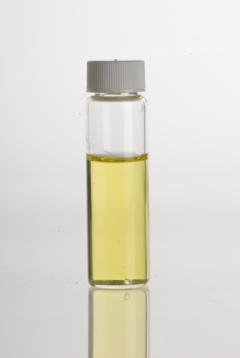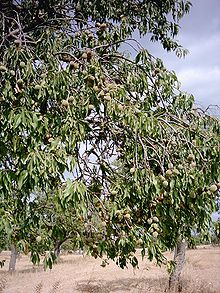eucalyptus oil
oil

In November 1788, some ten months after the establishment of the colony of New South Wales, 1 quart (roughly 1 liter) of the steam distilled leaf oil of the Sydney peppermint gum, Eucalyptus piperita, was sent to England by John White, Surgeon-General to the Colony, oil companies. thus laying claim to being the first useful natural product produced in Australia. In 1852, at the prompting of the botanist Baron Ferdinand von Müller, the English pharmacist Joseph Bosisto started commercial production of eucalyptus oil at Dandenong near what is now Melbourne. The eucalyptus oil industry continued to expand and Australia remained the world's largest supplier of eucalyptus oil well into the first half of the 20th century. palm oil. The development of the infant Australian essential oil, and in particular of the eucalyptus oil, industry was adversely affected by several problems, the chief of which was the variable quality of the oils traded. There were several reasons for this unsatisfactory state of affairs, such as:
- The botanical classification of the novel, unusual and often very complex Australian flora was only in its beginnings - which led to confusion and uncertainty in the identity of the species distilled (it should be noted that at the present time there are in the family Myrtaceae alone close to 1000 species of Eucalyptus, at least 230 species of Melaleuca, 80 species of Leptospermum, etc and the numbers are still growing).
- Large variations in the quantitative composition of essential oils from the same botanical species, including the existence of chemical varieties (the "physiological forms" of Penfold and Morrison).
- The worldwide lack of knowledge of the chemistry of terpenoids, a class of often unstable and occasionally complex essential oil constituents, which seriously hampered the researches of early essential oil chemists.
get eucalyptus oil
Jojoba oil
 Jojoba oil is the liquid wax produced in the seed of the jojoba (Simmondsia chinensis) plant, a shrub native to southern Arizona, southern California and northwestern Mexico. The oil makes up approximately 50% of the jojoba seed by weight. Jojoba oil is a mixture of wax esters, 36 to 46 carbon atoms in length. Each molecule consists of a fatty acid and a fatty alcohol joined by an ester bond. 98% of the fatty acid molecules are unsaturated at the 9th carbon-carbon bond (omega-9) [2] The approximate percentages of fatty acids in jojoba oil are as follows:
Jojoba oil is the liquid wax produced in the seed of the jojoba (Simmondsia chinensis) plant, a shrub native to southern Arizona, southern California and northwestern Mexico. The oil makes up approximately 50% of the jojoba seed by weight. Jojoba oil is a mixture of wax esters, 36 to 46 carbon atoms in length. Each molecule consists of a fatty acid and a fatty alcohol joined by an ester bond. 98% of the fatty acid molecules are unsaturated at the 9th carbon-carbon bond (omega-9) [2] The approximate percentages of fatty acids in jojoba oil are as follows:
Fatty acid Min Max
Eicosenoic 66% 71%
Docosenoic 14% 20%
Oleic 10% 13%
get Jojoba oil
almond oil

The almond (Prunus dulcis, syn. Prunus amygdalus Batsch., Amygdalus communis L., Amygdalus dulcis Mill.), is a species of tree native to the Middle East and South Asia. Almond is also the name of the edible and widely cultivated seed of this tree. Within the genus Prunus, it is classified with the peach in the subgenus Amygdalus, distinguished from the other subgenera by the corrugated shell (endocarp) surrounding the seed.
The fruit of the almond is not a true nut, but a drupe, consisting of an outer hull and a hard shell with the seed ("nut") inside. Shelling almonds refers to removing the shell to reveal the seed. Almonds are commonly sold shelled, i.e. after the shells are removed, or unshelled, i.e. with the shells still attached. Blanched almonds are shelled almonds that have been treated with hot water to soften the seedcoat, which is then removed to reveal the white embryo.



get almond oil
News
- Study Confirms Effectiveness of Vapor Rub in Relieving Cold Symptoms
- Vapor rub, which is a salve containing camphor, menthol and eucalyptus oil, provides children aged 2 and above with relief during periods of cough and cold ...
- Bosisto's Eucalyptus Spring packs
- Bosisto's are giving away five spring packs full of Eucalyptus products to help you clean and freshen your home naturally. Bosisto's Eucalyptus Oil has been ...
- New Organic Make-Up, Inspired By Nature
- Green People's new collection additions provides the finest organic Shea and Cupuaçu butters, Beeswax and Jojoba oil to nourish and protect skin. ...
- NIVEA's Beautiful gift set makes the perfect stocking filler
- Proving especially popular is NIVEA Soft, a silky smooth, instantly absorbed formula containing Jojoba oil and Vitamin E that is perfect for hydrating faces ...
- Unusual cooking, seasoning oils are the next interesting ingredient
- Almond oil. An oil with a delicate nutty flavor and aroma. Very expensive French almond oil, huile d'amande, has an intense flavor and aroma of lightly ...
- No-fuss nail care for men
- ... a thimbleful of cuticle oil (usually a blend of oils that can include things like avocado oil, almond oil and Vitamin E), a nail brush and a nail buffer ...















Tidak ada komentar:
Posting Komentar